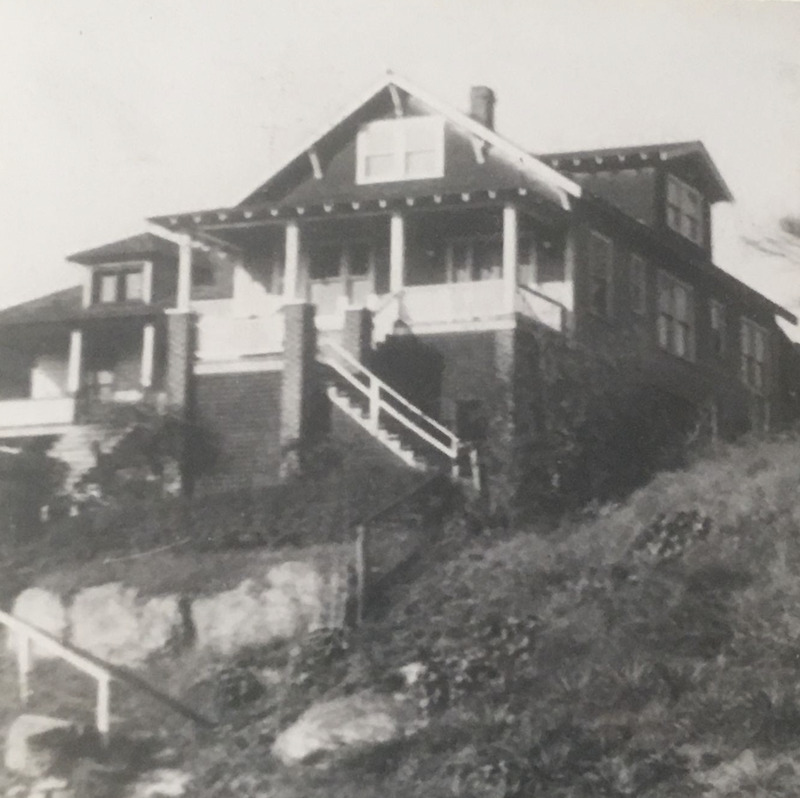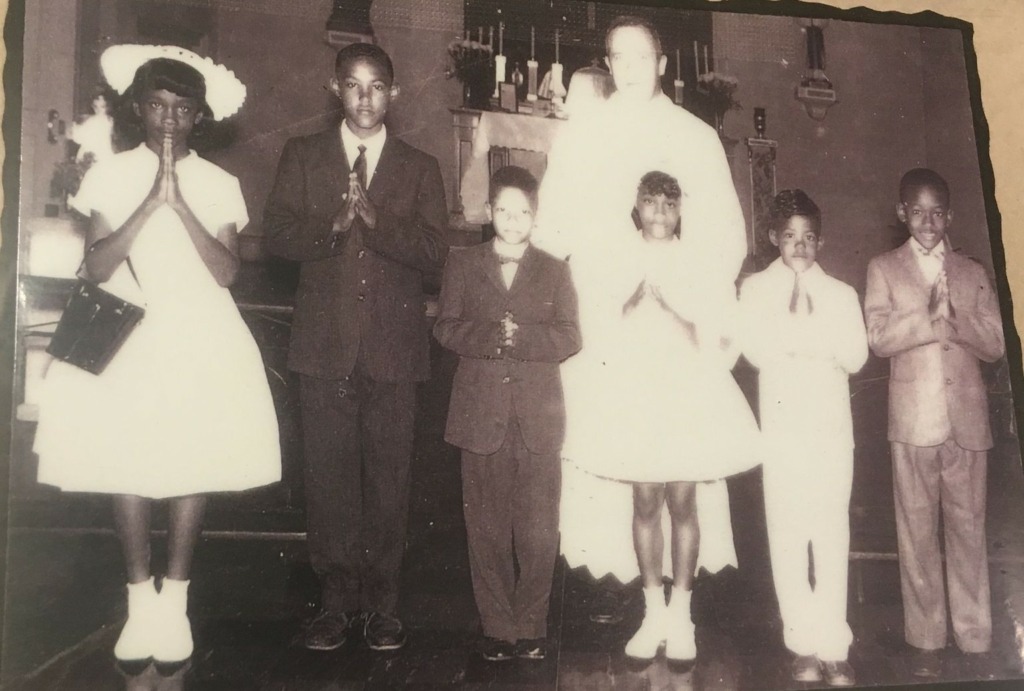St. Gerard is southwest Virginia’s only Black Catholic parish
“I see in my neighbor the person of Jesus Christ.”
— St. Gerard Majella
On Oct.16, 1946, the feast of St. Gerard Majella, a house in an African American neighborhood near downtown Roanoke was chosen for what would become St. Gerard Parish. It will celebrate its 75th anniversary on Oct. 16.
“This is ‘the little church that could’ – and did, and does,” said Father Danny Cogut, pastor of St. Gerard. “The people of this parish are known for working together because of their faith.”
In the wake of World War II, Bishop Peter Ireton asked a group of Redemptorist priests to set up a mission to serve the Black community of Roanoke. Father Maurice McDonald arrived in September 1946 as pastor, celebrated the first Mass at Harrison School for 17 people, and in October secured a house at 835 Moorman Road for the mission church. The brick church that still houses the parish was built in 1951.
“They founded a humble church that is still humble, but it has a rich legacy that continues to grow,” said Father Cogut. “We need to remember what the U.S. was like for African Americans in 1946, during segregation.” He is also pastor of Our Lady of Perpetual Help, Salem, which was founded in 1948 as a mission of St. Gerard and was served by priests based at the Black parish until 1963.
The Black parish, known for its welcoming spirit, has seen its demographics change in three-quarters of a decade. It now is more than half Hispanic, with white and Black American parishioners, and parishioners from Burundi and the Congo. Masses are celebrated in English and Spanish, with translators for African members who speak Kinyarwanda, Kirundi or Swahili.
The diversity of St. Gerard Parish is reflected throughout the church building.
The welcome sign outside is in English, Spanish and Kinyarwanda. The bulletin is bilingual (English and Spanish) with some Kinyarwanda. A banner in the nave proclaims: “St. Gerard: A house of prayer for all people” in English, Spanish and Swahili. Behind the altar stand statues of Our Lady of Guadalupe and St. Gerard Majella. Above them hangs a hand-carved African crucifix with a Black Christ.
Founding parishioner Charles Anderson Sr., who turned 100 earlier this year, has spent most of his life serving St. Gerard Parish. Born and raised Baptist, Anderson became Catholic at 25, shortly after meeting Father McDonald in 1946. The two became close friends.
“He had a big influence on me and made the Catholic Church so appealing,” Anderson said. “We were almost like brothers.”
Helping to establish the first and only Black Catholic parish in southwest Virginia was a highlight of Anderson’s life. “I love this church so much,” he said. “I have a personal love for it that goes back a long way.”
Virginia Mignon Chubb-Hale, a former educator and longtime parishioner who chairs both the social justice and safety committees, joined St. Gerard around 1966 after finishing college but had been attending since childhood.
Her late father, Leon Chubb, was an early member.
“He was a Methodist but entered the Catholic Church at St. Gerard’s in 1947 or 1948,” said Chubb-Hale, who also attended the Methodist church with other family members. This was during segregation when Blacks did not feel welcome in many places, including other churches, she said. “But St. Gerard’s was special. I loved to go with him through elementary school and high school.” After college, she became a Catholic.
“What I love most about St. Gerard’s is the diversity,” Chubb-Hale continued. “I’ve always enjoyed getting to know people of other backgrounds because that’s how you learn and understand people from other cultures.”

Bea Johnson has attended St. Gerard since the early ’60s. After meeting Father Bernard Krimm, the pastor at that time, she visited to discuss the parish and the Catholic faith.
“I was very enthused by his teachings,” said Johnson, who grew up in the Holiness Church. “It was so encouraging to go into the Catholic Church.”
“We felt at home there because of the people, who had lots of concern for each other,” she said. She and her late husband, James, raised their three children in the parish, and she was an extraordinary minister of the Eucharist and usher board member, as well as an office volunteer for many years. “Since I began attending, when it was mostly Black, I have seen more white church members join us and remain at St. Gerard’s for the same reasons we joined: the warm and welcoming community.”
The growing diversity makes the parish better, Johnson said. “St. Gerard’s strengthened my faith in God. The Holy Spirit is very strong there.”
Betty Harvey started coming to St. Gerard’s in 1961 when she was in the seventh grade, even though her family attended a nearby Christian Church.
There was a daycare at St. Gerard “and Father Krimm was always outside playing with the children,” she said. She and a friend, Lelia Coleman, started attending the church and, with their parents’ permission, became Catholic.
“Our parents felt that anything religious was good,” Harvey said. “They were very open-minded. And I liked learning, and I found comfort in the order of the Mass.”
She described the vibrant Black community at St. Gerard’s – which included youth ministries, sports teams, exercise classes, Boy and Girl Scout events, a choir and charitable organizations – as “a family.”
“Everyone knew everyone,” she said. “It was the center of activity for that community.”
In 1997, St. Gerard welcomed Father Walter Barrett, the Diocese of Richmond’s first Black diocesan priest, as its pastor.
Maria Morales and her husband, German, originally from Venezuela, began attending St. Gerard in 1996. She has served as the religious education coordinator since 2001 but began volunteering as a Spanish translator soon after she arrived.
When the first Spanish Masses were celebrated in 1996, the Moraleses felt they could be “bridges” between the pastor and the English-speaking community because they were bilingual. As a couple, they also began to offer marriage preparation classes in Spanish.
As word of the Spanish Masses spread, more Hispanic Catholics attended, some from as far as 80 miles away.
“They are looking for a place where they can understand the Mass in their own language and feel welcome,” Morales said.
Paul English was among the few white parishioners to join St. Gerard more than 40 years ago and has been involved in many ministries, especially music.
“This tiny church, built in the Jim Crow era, attracted me,” he said, adding that he felt embraced by the community even though he was in the minority. “It had more soul than any church I’d ever attended.”
As part of the music ministry, he attends all Masses and hears the parish pray and sing in multiple languages.
“It’s been enlightening, stepping into other cultures and worshiping God together,” he said. “St. Gerard’s may be poor in material goods, but it is wealthy in spirit.”
Father Louis Benoit, who served the parish for one year long ago, fondly recalled the distinctive and remarkable music.
“St. Gerard had an outstanding Gospel choir,” he said. “I never heard them when they were not good.”
When Tom and Becky Carr moved to Roanoke in 2007 they wanted a diverse parish, and they knew from the first visit that they had found it.
“The church looked like a mirror image of the city, with Black, brown and white faces,” said Tom Carr, who has since served as a pastoral council member and catechist.
“At one time, I remember hearing a priest say in his homily, when he looked out at all the different people there: ‘This must be what heaven looks like,’” he added.
Like others, the Carrs also were impressed with the “different and joyful sound” of the racially mixed Gospel choir. That choir eventually disbanded; now the African choir is drawing attention with their unique languages, harmonies and drums.
Chubb-Hale sees the diverse parish growth as an ongoing chance for personal growth.
“Having a better understanding of different people is so important,” she said. “Racism will not end in my lifetime, and it frightens me sometimes. But when I see people come together as they do at St. Gerard’s, when I see different races working together for the common good, it gives me hope.”

